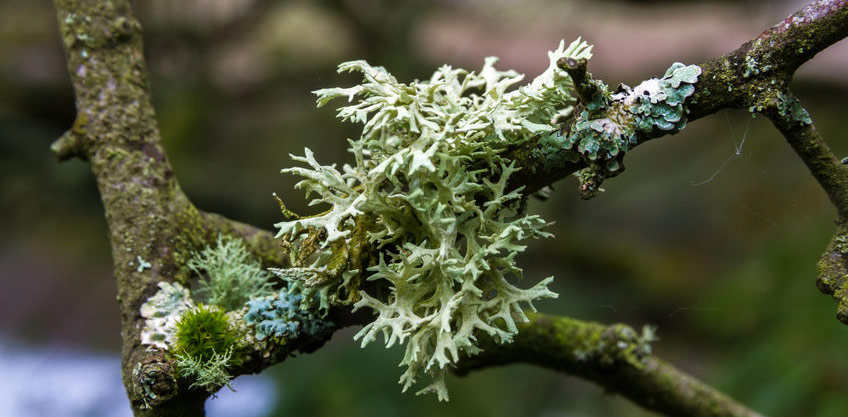Oakmoss Absolute
Evernia prunastri

Description
Aromatically, Oakmoss Absolute is a base note that possesses a very deep, earthy aroma. Its primary benefit lies within its use as a natural fixative within perfumery and natural fragrancing applications. Within the scope of natural fragrancing, a fixative is an ingredient that helps to stabilize and prolongue the aroma.

Back when I first began working with essential oils and absolutes, Oakmoss Absolute was much more commonly available. However, there is a high risk of skin sensitivity when using Oakmoss Absolute, so it's now commercially sold and used far less often. I'm keeping this profile available as a way to try to forewarn of the risks when working with Oakmoss Absolute. Please refer to the Safety Information section below for more information.
Oakmoss Absolute Benefits and Uses
Used at very low dilution in perfumery for its earthy aroma and its properties as a fragrance fixative.
Botanical Name
Plant Family
Common Method of Extraction
Solvent Extracted
What is an Absolute?
Plant Part Typically Used
Color
Dark Brown
Consistency
Medium - Thin
Perfumery Note
Base
Strength of Initial Aroma
Medium
Aromatic Description
Oakmoss Absolute smells rich, earthy and woody.
Major Constituents
- Methyl B-orcinolcarboxylate
- Ethyl Everninate
- Ethyl Hematonmate
- Ethyl Chlorohematommate
Source: Y. Terajima, H. Ichikawa, K. Tokua, et al. Quantitative Analysis of Oakmoss. (In: B.M. Lawrence, B.D. Mookherjee, J.B. Willis (Eds.) Flavors & Fragrances: A World Perspective. Amsterdam: Elsevier, 1988), 685-695. D. Joulain, R. Tabbacchi. Lichen Extracts as Raw Materials in Perfumery. Part 2: Treemoss. (Flavour & Fragrance Journal 24, 2009), 105-116. Sources cited in Robert Tisserand and Rodney Young, Essential Oil Safety (Second Edition. United Kingdom: Churchill Livingstone Elsevier, 2014), 368.
Oakmoss Absolute Safety Information
Tisserand and Young warn that there is a high risk of skin sensitization associated with Oakmoss Absolute and that it should be avoided by those with hypersensitive/diseased/damaged skin and in children 2 and under. They recommend a dermal maximum of 0.1%. Reading Tisserand and Young's full profile is recommended. [Robert Tisserand and Rodney Young, Essential Oil Safety (Second Edition. United Kingdom: Churchill Livingstone Elsevier, 2014), 368.]
Because Oakmoss Absolute poses a higher risk of causing irritation and sensitization, it is recommended that it be avoided in the bath, even if solubilized/diluted.
General Safety Information
Do not take any oils internally and do not apply undiluted essential oils, absolutes, CO2s or other concentrated essences onto the skin without advanced essential oil knowledge or consultation from a qualified aromatherapy practitioner. For general dilution information, read AromaWeb's Guide to Diluting Essential Oils. If you are pregnant, epileptic, have liver damage, have cancer, or have any other medical problem, use oils only under the proper guidance of a qualified aromatherapy practitioner. Use extreme caution when using oils with children and be sure to first read the recommended dilution ratios for children. Consult a qualified aromatherapy practitioner before using oils with children, the elderly, if you have medical issues or are taking medications. Before using this or any essential oil, carefully read AromaWeb's Essential Oil Safety Information page. For in-depth information on oil safety issues, read Essential Oil Safety by Robert Tisserand and Rodney Young.
Shelf Life
Important Information About the Profiles
The essential oil information provided on AromaWeb is intended for basic educational purposes only. The references to safety information, test results, constituents and percentages is generalized information. Essential oils can vary greatly in composition. The data is not necessary complete and is not guaranteed to be accurate. The essential oil photos are intended to represent the typical and approximate color of each essential oil. However, essential oil composition and color can vary based on harvesting, distillation, age of the essential oil and other factors. Profiles for several CO2 Extracts and absolutes are included within the directory, and are denoted as such.
